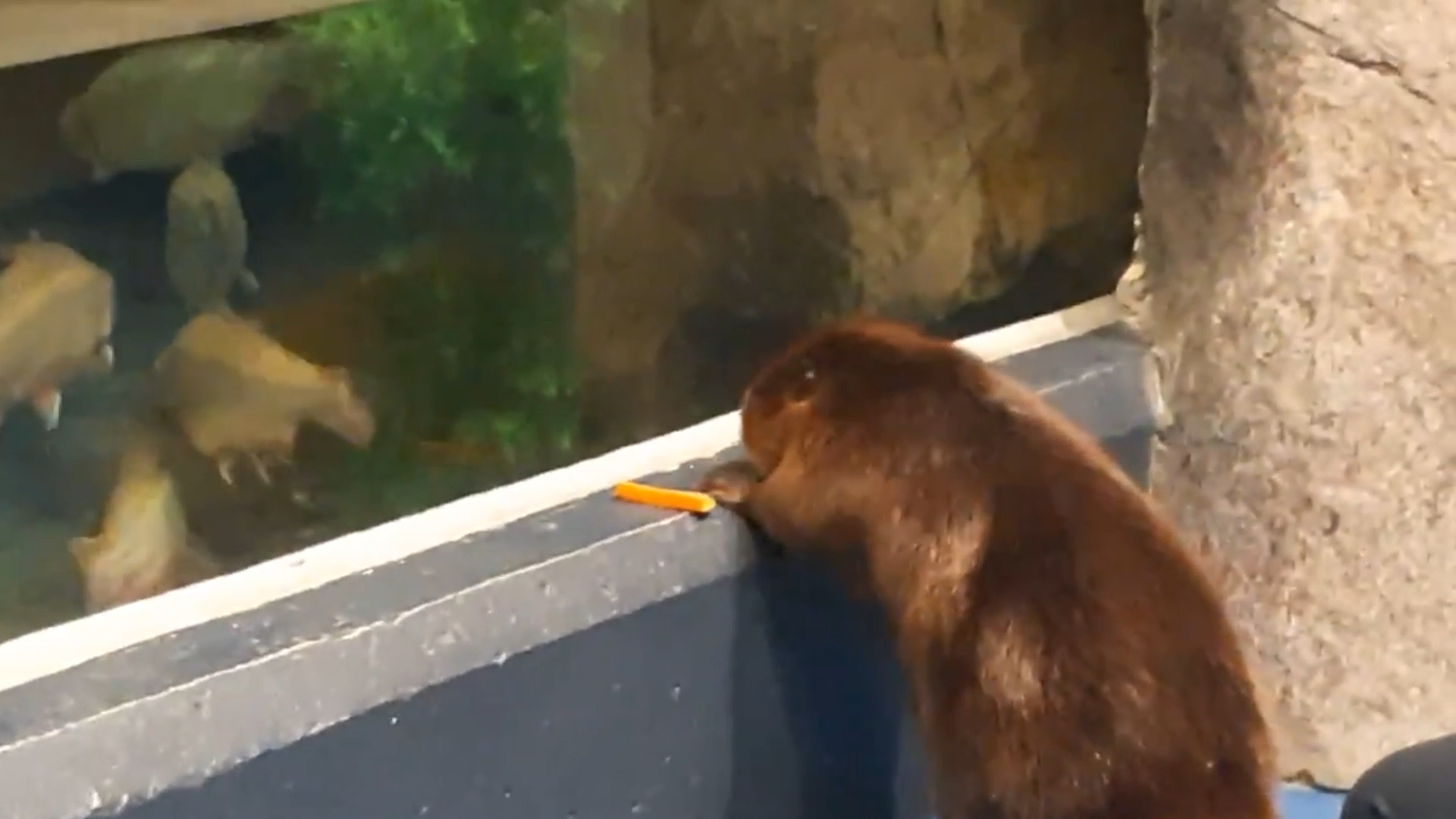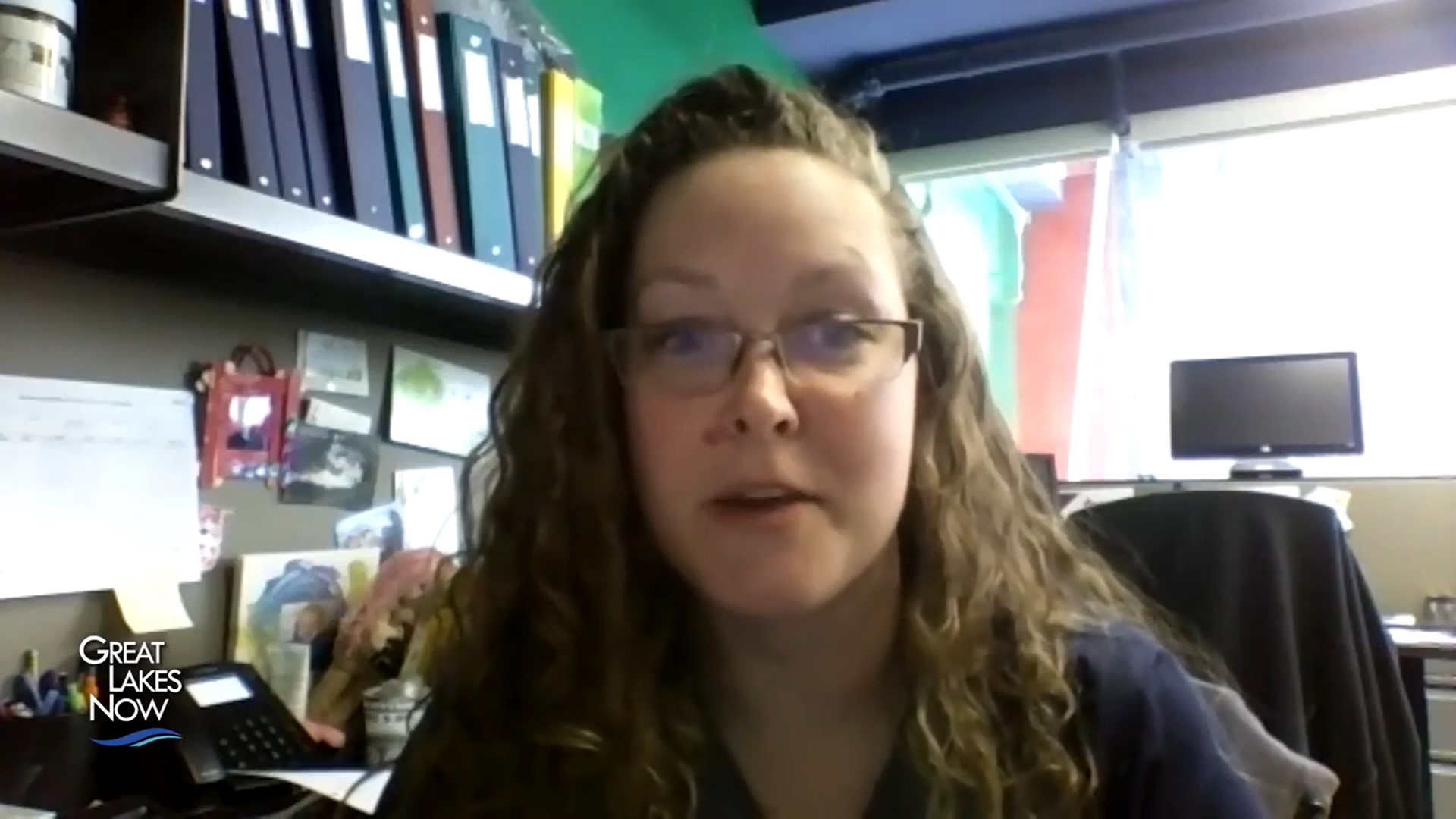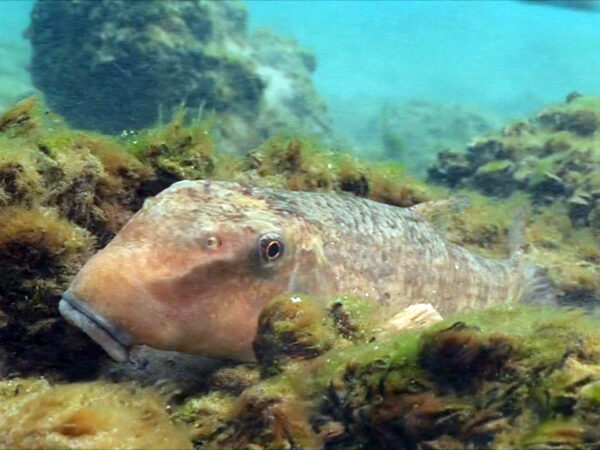
Masks or no, the otters at the Aquatarium at Tall Ships Landing in Brockville, Ontario, know exactly who’s in their den space.
“They really recognize us more by our smell and our boots,” said Jennipher Carter, senior aquarist at the Aquatarium. For the otters at least, adjusting to their caretakers all wearing masks didn’t take long.
The Aquatarium is one of many aquariums around the Great Lakes where visitors can take a look at various marine and aquatic creatures, both native and non-native to the region.
Located along the St. Lawrence River, the Aquatarium is currently closed to the public because of the COVID-19 pandemic, but that hasn’t stopped aquarium staff from finding ways to engage with the public about the animals and share what they do.
It isn’t the only aquarium to do so.
Catch Great Lakes Now’s segment and visit three Great Lakes aquariums during lockdown:
API key not valid. Please pass a valid API key.Great Lakes Now producer Danielle Dabney had a conversation with Jennipher Carter, senior aquarist at the Aquatarium. The transcript has been slightly edited for clarity and length.

Jennipher Carter, senior aquarist at the Aquatarium at Tall Ships Landing in Brockville, Ontario
Great Lakes Now: Can you can you talk about the ways in which your job has changed daily?
Jennipher Carter: Our job really hasn’t changed all that much. We are still doing all of the same things that we were doing before at the same quality, the same standards, only we’re doing a little bit differently.
The biggest change comes with the people aspect, not the animal aspect. So we have split into two teams to try and reduce that risk and to help protect ourselves as well. But, besides face masks and a little bit of social distancing, trying to keep away six feet from each other and just trying to keep that distance from our animals a little bit more as well, that’s really been the biggest thing for our animal care staff. But besides that, it’s actually given us an opportunity to do some new stuff with our animals.
GLN: What’s different for the animals?
JC: They’re not used to seeing us in face masks and some of them have been a little hesitant, kind of ‘What’s that?’ They’ve warmed up to us now. They’ve warmed up to the mask.
GLN: That’s interesting that they don’t recognize you with the face masks on.
JC: I’m not really sure that they don’t recognize us with the masks on because I just think it was something different and they’ve never seen it before and they reacted to it. It didn’t really take them long to get over it. They really recognize us more by our smell and our boots. Believe it or not, our otters are really funny because they’ll know when there’s a new pair of shoes back in their den space because they’ll make some noises and they’ll move around in a different way to let us know that someone is different back here.
But it is really imperative for that bond between us and the animal, especially during training and interaction and enrichments with them. And they get a sense of security with it. And they know that these people are here to take care of me. They’re going to feed me. We still have to keep in mind that they’re wild animals and they can react at such as wild animals. So we do take precautions to protect ourselves. But for the most part, they know who is back there and is taking care of them.
GLN: What are some of the benefits of us continuing to see the animals while we’re at home in our fishbowls?
JC: It’s just to continue having a touch to the outside world or to our regular everyday life. It’s important for our mental health to see that there are things that are still normal and things that are still happening outside of our little fishbowl. And it’s important for us to be able to share that as well with our guests who aren’t able to come in the door.
GLN: Was that something that you anticipated before this started, that there would be such a virtual embrace of the aquarium and animals and your work?
JC: It wasn’t our anticipation that there would be such a huge demand or a huge interest, I should say, to view the animals online and to record new experiences or enrichments with them. But with other aquariums doing it as well as us. It’s funny because we’ve gone back into some older files to share some of the fun things that we’ve been doing with them over time. And it gave us an opportunity to share some new stuff and hopefully some of our experiences go over well with our audience.
GLN: Have you learned anything new about your animals during this time? Have you seen any new behaviors, or have they taught you anything?
JC: That’s one amazing thing about this job, is every day we are learning, every day we are learning something new about our animals. Every day we are learning something new on things that we can do or things that they are teaching us. And it’s a pretty amazing experience. And if you like change, then this job is really for you.
But yeah, just learning that our Muskie is very adaptable and enjoys people. He has been very interactive with some of our staff members in playing peek-a-boo and following them and just being very interactive and he never really has in the past. So it’s kind of nice to see. Did you really expect that from a Muskie? Not really. So, yeah, these new things are starting to come out now that we have a few extra minutes to actually spend it and look at them.
Great Lakes Now producer Danielle Dabney did the reporting for this piece.
Catch up with more stories from Great Lakes Now:
Inside Entertainment: COVID-19 has Great Lakes aquariums and museums offering online activities
Sewage Check: Great Lakes researchers look to wastewater for data on COVID-19
COVID-19 Connection: Pandemic provides an opportunity for fish and insects to bond
Day in the Life: How are Shedd Aquarium’s animals coping in the absence of visitors?
Featured image: A beaver explores the Aquatarium at Tall Ships Landing in Brockville, Ontario, while the aquarium is closed to the public. (Great Lakes Now Episode 1014)




